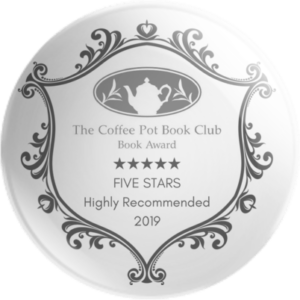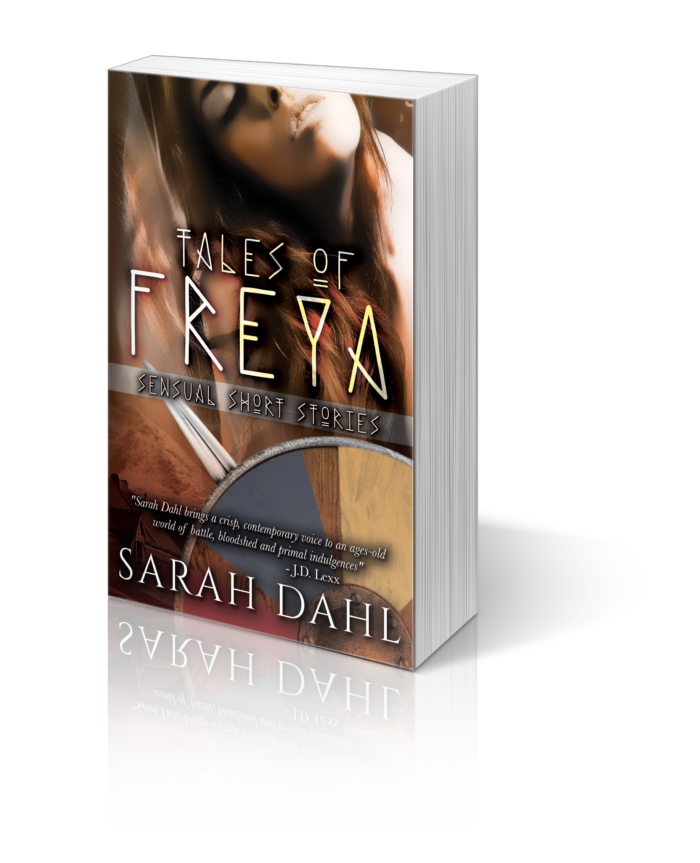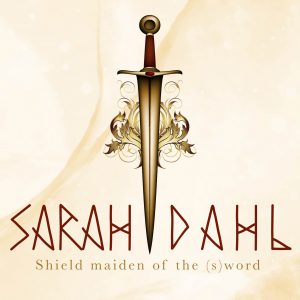Outlander vs. 50 Shades of Grey …
… or How to write sex with style – Part 1
Yes, one can’t compare the two, Outlander and 50 Shades of Grey, and still, I’ll do just that, to shed some light on what the authors and film-makers attempted. Both evolve around the romance of a couple, and the undoubtedly most talked-about scenes (those which made both stories go through the roof with success, in both books and films) are the love/sex scenes. They are the core of the stories, because here the relationships of the couples are laid bare.
In 50 Shades, it is all about the sex and what it does to the protagonists and what it says about them. It is clearly a contemporary erotica piece and attempts to challenge readers.
Outlander is a rather typical historical romance about how a couple overcomes obstacles to live happily ever after, with added quite explicit sex scenes, but I’d not call it erotica. Back in 1991 the author’s descriptions must have counted as daring — reading the scenes today, I find them winding and metaphorical, beautifully written yet a little indirect and old-fashioned for today’s taste. I often couldn’t form a clear picture in my head as to what exactly the couple were doing … But for that, we now have the series, and can see what Gabaldon meant, interpreted for today’s visual audience.
Let’s compare what cannot be compared, Outlander vs. 50 Shades of Grey:
- The genres: modern, contemporary BDSM erotica vs. historical romance, old style. The first has new, spicy ingredients for the average reader, whereas the latter follows the tried and tested recipe of most romance stories and therefore satisfies a more average taste bud.
- Settings: Where one story is set in cool, modern, sterile city-dwellings, the other is as rural as it gets and features stables, castles, forests and inns with quirky characters.
- The couples: Shy virgin Ana, and dominant Alpha-male Christian vs. sassy, experienced Claire, and her male virgin (!) Jamie. So there’s a virgin in each story! Note that and the impact it has to have on the subsequent love-making!
- The sex: BDSM-adventures of virgin Ana and her teacher Christian vs. the romantic love-making of virgin (!) Jamie and his confident teacher Claire. Note the student-teacher relationships and power constellations when it comes to their intimacy!
- Both feature some bondage/bandage: Christian ties up Ana for pleasure, and Claire has to repeatedly bandage up Jamie, immobilising both virgins, which makes for some sizzling scenes. The bondage/bandage is meant to get the teacher’s hands on the student.
- Both feature whips and pain for the students: Ana is whipped for pleasure (his or hers, I dunno) and Jamie is tortured as punishment (well, not for fun and not by Claire — though she is spanked by him at some point, later, when the husband has to reprimand his wife, which is historically accurate). One could write a thesis about the image of whipping in both books! Both virgins have to shed clothes and grit their teeth. For me, watching both had nothing to do with pleasure and I’m glad whipping as torture belongs to history and can stay there, instead of reappear in today’s bedrooms. But if author James pleasures readers with her whips, that’s fine and she deserves her success.
- There’s the Scottish dirt of stables, old rooms and taverns, and we see hairy chests and faces, as opposed to the modern, aseptic cleanliness of glass, steel, and smooth skin everywhere. Which brings me to:
- The men: We need some physical appeal: muscles, a cheeky grin, lovely hands … you name it. The rest is what they personify. There is the clean-shaven billionaire with muscles from the gym, as opposed to the rarely shaved, hairy-chested rogue with muscles from mortal fights in the dirt. And: he’s a virgin! That was Gabaldon’s ultimate twist to entice the female readership. See below.
- Both stories feature a slow falling-in-love. They CAN both be counted as romance pieces, strange as it may sound, because of the relationships that slowly evolve beyond the sex.
- The scenes that have most impact on readers/viewers definitely are the sex scenes, they are the strongest tool to display the core of a relationship. So, where 50 Shades is an erotica piece with so many sex scenes it could be a line-up of short stories, in Outlander’s case we can cite “the wedding night” as THE central love-making scene that has the (female) audience on its weak knees.
Students and teachers
And here the teacher-student relationships come into play: the students more (Ana) or less (Jamie) hand themselves over to the experienced lovers. Most love scenes thrive on the chemistry that evolves from a “let me show you”-attitude. One steps back and the other takes charge. These roles can change within a scene, to shift focus and reveal a different side to a character. 50 Shades is more limited in that respect, as the roles are very fixed dominant-submissive, while the male virgin Jamie quickly implements Claire’s teachings and becomes more active.
The power of sex scenes
Sex scenes allow the most intimate view for the readers/viewers on what the character-relationship is like, what they want from each other, want to give the other or desire, how they interact, how they strip “naked” in a metaphorical sense: what is their naked, human core like? How do they act and re-act when they are vulnerable, baring it all, emotionally and physically? Sex isn’t just a physical exercise to reach a climax of pleasure. It is an inner turmoil, raw emotions, the utmost nakedness of the soul, a communication between bodies and hearts/souls.
This is the power of sex in books/films, and therefore I find a judgement of sex scenes very difficult, and criticism has to be on a delicate level. What is a “good” love scene? One with challenging, complicated novelty-positions? Really creative sports between the sheets? Or rather the basic, tried-and-tested ones most readers can relate to?
What makes a mind-blowing read?
It all depends on the expectations of the audience. 50 Shades reached so many readers, because it was hyped as “new”, “forbidden” and serving secret female “needs”, being out of the readers’ comfort zone. It’s a shame James can’t really “write” in the sense that she does something beautiful or masterful with her words. Her books are poorly written (sorry if I may offend any fan of hers, it’s just my conclusion), the plot is … let’s say thin, and why on earth did it become a best-seller when others before her had written similar books?
James’s success was so great that people made the effort to find the uniqueness of her recipe (read for example Nathan Bransford’s findings, those of the Guardian, or these scientific psychological conclusions). My own conclusion is simple: everyone wanted to find out “what the fuss was all about” and bought it out of curiosity about the hype. To join in the conversation — and have fun with explicit sex scenes. (All I want to add to the topic of bad writing concealed by seeming originality is: feel free to check out these erotica books that would deserve the attention James received!)
As you may have sniffed out by now, I can’t relate, and am not a fan of James. Because for me, 50 Shades is complicated, scary sex with two characters so stereotyped it hurts — and it hurts not only Ana, but it also pains me to read. There is nothing inspiring, neither literary nor fantasy-wise. And yet, people are inspired, because they go out and buy all that BDSM-equipment. I am not sure that transporting a fantasy into reality is a wise choice, but it can surely widen some horizons.
In contrast to that, Gabaldon is a good romance writer who understood her ingredients. The Outlander books have always been quite popular, and not least because of their explicit (well, in an inexplicit, yet daring way for the time) sex scenes, or the sizzling encounters between the protagonists. The author can be quite wordy, winding and take a little too long to get to the point in her descriptions, dialogue and love scenes. But the first book is from 1991. And she creates wonderful, quirky, loveable and realistic characters — which is, I reveal, her recipe for success! It’s a romance story and all about Jamie and Claire: their inner turmoils, their shy love, their desperate fights, their satisfying unison.
And this is the ancient recipe for an engaging love story! Plus, the sex scenes are beautifully choreographed!
Why I’m more Outlander than Grey:
For the just stated reasons, I prefer to read (and also write) Outlander-style romance. There is a plot with depth, and characters that are not only externally attractive stereotypes, but they are flawed and unpredictable in places. In the end, though, when push comes to shove, they always turn out reliable and strong. He’s a rough yet sweet Highlander with fighting skills and muscles actually acquired during years of man-to-man fighting (not in some gym). He has the look and charm of a heart-throb, but: tada, he is a VIRGIN! Unbelievable as it sounds, even or especially for “those days” — I bet this little detail is part of the recipe for Gabaldon’s success, because it makes the much desired unison of the leading couple on THAT wedding night even more appealing (and sweet Jamie is brilliantly personified by the actor Sam Heughan)! By the time the couple actually is alone in the bedroom, the readers/viewers want to see Jamie being taught a thing or two by his beloved teacher Claire! They enjoy the looks on his “innocent” face at her every touch, because their emotions make their love so intimate and special. It’s not the inventive techniques they exercise — the sex of their wedding night is pretty normal and therefore — realistic!
Readers can relate to the actions, PLUS they feel the emotions on display, because they fell in love with the characters just like the characters with each other! And there’s not a stereotype in sight. Gabaldon’s Jamie is simply adorable: readers love him, the man as such, with all his strengths and flaws, just like Claire falls for him after some time of pondering and being torn. Jamie and Claire take their time to find each other (read my blogs about how slow equals sexy here), although readers know that they are destined for each other. Life-threatening events bring them together. Both endure a lot before they are rewarded. This is real storytelling, the kind of basic recipe that has always worked well.
They overcome all obstacles in the outer world AND their inner worlds (both have inhibitions first) to finally be united and fight the fight together, as lovers and partners, truly concerned for each other’s well-being. This recipe has always worked since story-telling was invented. All of this, for me, makes Outlander so much hotter than 50 Shades of Grey.
Outlook: Next week, I’ll be talking about the Vikings. I.e. the historical Vikings as they can be found in artefacts and museums, the Vikings of the successful History Channel series, and MY Vikings, who are a culmination of both plus my own inventions. What makes them so attractive (apart from the actors Katheryn, Travis and Clive and all these other hot raiders and shield-maidens and monks and princesses)!
I hope to see you then!
If you have different or similar opinions on the two stories, or just want to add a thought or idea for the next posts about How to write sex with style, please don’t hesitate to share them with us in the comments!




Comments (7)